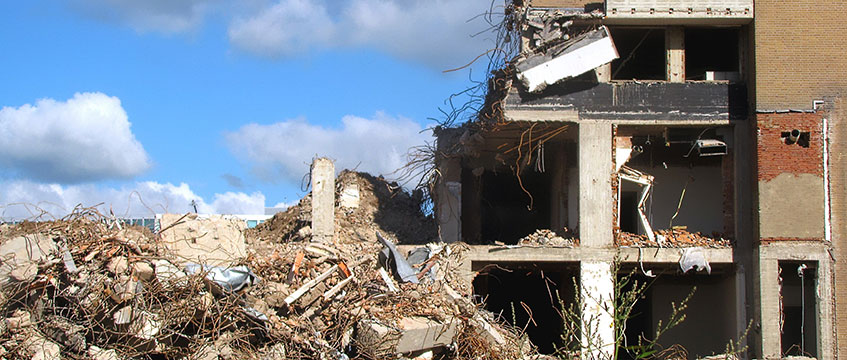Considering the embodied and operational carbon emissions of a building as one allows us to explore the carbon impact of retrofitting an existing building versus demolishing and rebuilding new over the lifetime of a development.
Industry guidance suggests this period is to be taken as 60 years and throws up some interesting findings.
Let’s apply the analysis to an office building in central London. In total carbon terms, over the assessment period, demolish-and-rebuild scenarios are so carbon intensive that they are almost equivalent to doing no work at all to an existing building to reduce carbon emissions (see chart below).
This is in part due to the additional floor area required to enable this particular redevelopment, despite best intentions for operational performance (~55kWh/m2/yr) aligned with “Paris proof” performance targets. The significantly improved operational performance is unable to counter the upfront embodied carbon impact associated with constructing a brand new building.
So, if one of our overall goals is to reduce carbon emissions, is new-build the right approach?
A “light-touch” scenario of carrying out works to meet minimum energy efficiency EPC requirements sees the lowest carbon impact. It requires less upfront embodied carbon as fewer improvement works are undertaken. However, the operational performance is compromised for the same reason, resulting in a higher energy use intensity and a building that emits more carbon when operating.
The result is a route that may not be considered “net zero ready” owing to excessive operational energy consumption. Carrying out such work could also result in higher operational costs and/or a building that is less favourable to future tenants than others. Just because energy is expected to be cleaner and greener in the future, doesn’t mean we can consume more of it. Reducing our demand is a key step towards the National Grid decarbonising.
Major refurbishment presents a significant opportunity to mitigate operational carbon emissions without the upfront emissions associated with building a new structure. Of course, there are technical challenges to delivering this, which need to be assessed as early as possible, but such a scheme could still offer reasonable savings in operational performance (~75kWh/m2/yr).
Hybrid approach
Where the technical challenges for a full refurbishment are too great or the outcome provides a compromised product, a hybrid approach – retaining parts of an existing building (substructure, cores, facades, etc) where possible – might offer an alternative solution and would mitigate upfront carbon while unlocking greater design flexibility and more opportunity for operational performance enhancements.
The idea of a carbon payback crossover on a scheme where a demolition-and-rebuild option might outperform a retrofit over a lifetime is being asked for ever more. However, as this assessment suggests, when comparing apples with apples (an optimised new-build versus a fully optimised retrofit), the new-build is unlikely to pay back the upfront embodied carbon required to construct it.
Every project is different, and not every technical challenge will be able to be overcome, which could lead to a compromised outcome.
Assessments do make clear, however, that whether new-build or rebuild, a key driver should be maximising operational performance and mitigating embodied carbon wherever possible. To achieve this, assessments of the existing building need to be undertaken as early as possible.
These assessments also need to look beyond carbon. For example, is the existing building fit for purpose (high ceilings, natural light, etc)? Can it be refurbished to deliver a long-lasting human-centric design? What is the social significance of the building in the local community?
Oversimplify the debate to just talk about carbon and you lose the opportunity to find the best solution for your building.
Stephen Lloyd is Passivhaus designer at Savills Earth











